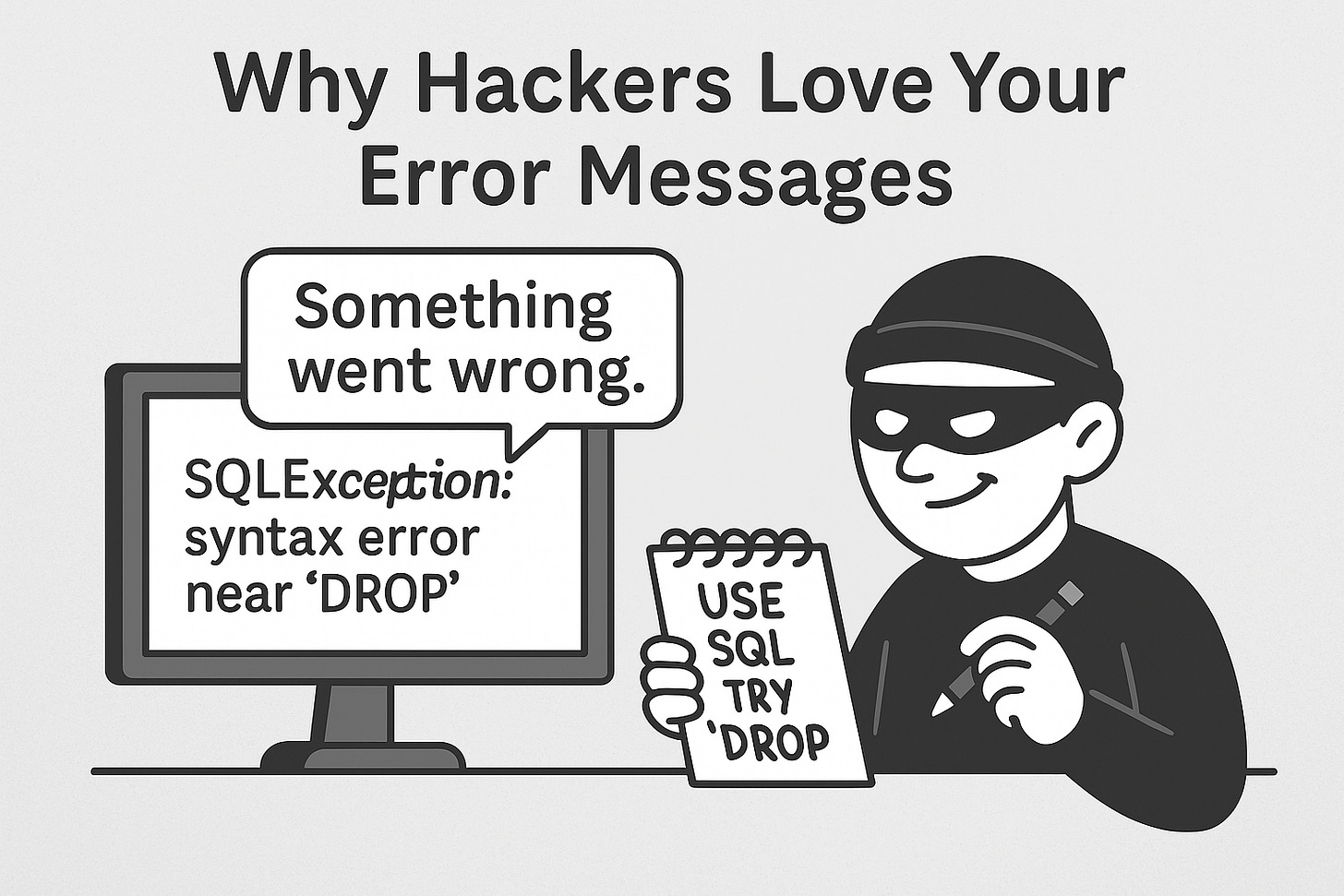Imagine you're standing at a locked door.
You try the knob. It doesn’t open.
Suddenly, a loudspeaker says:
❗“Access denied: incorrect key. But here’s what we were expecting — something exactly 16 characters, starting with ‘X’.”
You didn’t get in…
but wow, you learned a lot.
That’s what error messages can do when they’re written for developers — and shown to everyone.
And hackers?
They love them.
Because every error message is like a tiny glimpse behind the curtain.
💥 What’s the Risk?
When your app spits out detailed errors like:
SQLException: syntax error near 'DROP'or
Stack trace: NullReferenceException in UserController.java:84…you’re doing three things:
Confirming what tech stack you use
Revealing internal file structures and code paths
Telling the attacker exactly where things went wrong
You’ve just become an open book with all the answers in the back.
🧠 Why It Happens
You're in dev mode.
You want clear errors for debugging.
The framework helpfully shows the full stack trace.
You forget to switch to prod mode.
Suddenly, you're explaining your whole backend to anyone who asks rudely.
It's like posting your home security code on the front door — but in YAML.
🧪 Real Example
Let’s say someone tries to log in with weird input:
Username: '; DROP TABLE users; --If you respond with:
500 Internal Server Error SQL error: unexpected 'DROP' near line 1That’s gold.
Now the attacker knows:
You use SQL
You're not sanitizing input
Their injection attempt is close
They’ll tweak and try again.
You're practically coaching them.
🛡️ So What Should You Do?
✅ 1. Show generic errors to users
Instead of saying:
Exception: invalid token structure in AuthModule.java
Say:
Something went wrong. Please try again.
Save the details for the logs.
✅ 2. Log everything — but securely
Include full error traces in your logs
Make sure logs are only accessible internally
Don’t log sensitive values like passwords or full tokens
✅ 3. Disable verbose mode in production
Most frameworks have a flag:
app.set('env', 'production');or
DEBUG = FalseThat alone can hide stack traces from the outside world.
🚨 Bonus Tip: Watch Your APIs
Even APIs return verbose errors:
{ "error": "Invalid JWT signature", "stack": "at auth.verifyToken (/utils/token.js:32:17)..." }Instead, return:
{ "error": "Unauthorized" }Let your logs tell the full story — not the response body.
🧠 Final Thought
Your error messages were written to help you.
But when left exposed, they help the wrong people.
Be generous in your logs.
Be vague in your responses.
And remember — the less you say in public, the safer you stay.
